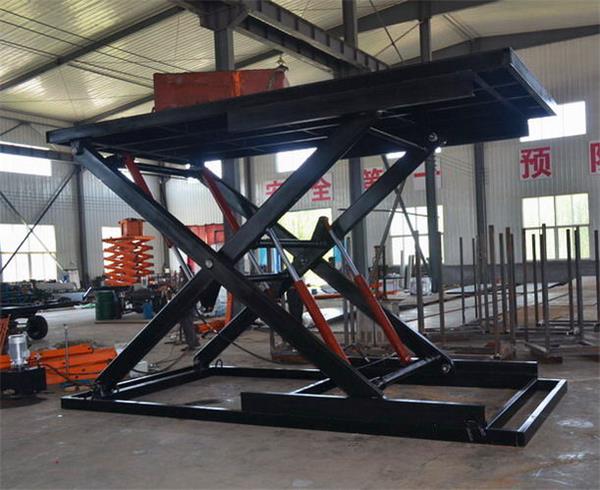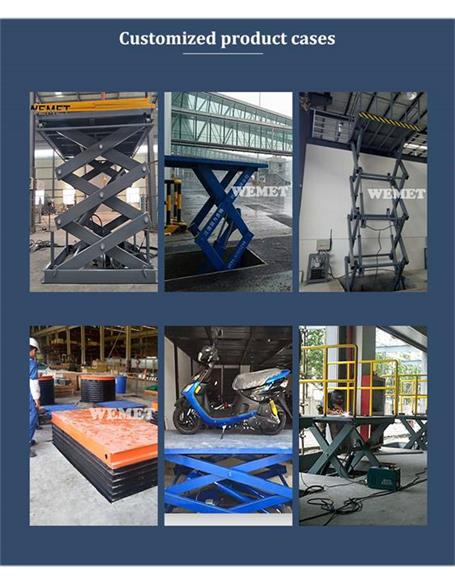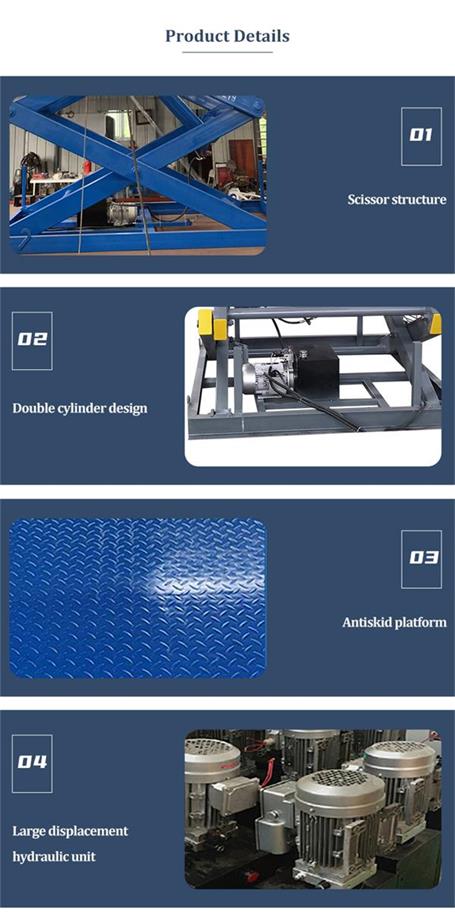I. Understanding Scissor Lifts:

A scissor lift is a type of aerial work platform that uses a mechanism of crisscrossed metal supports to raise and lower a platform vertically. It provides a stable and secure elevated working platform for workers to access areas at various heights.
Scissor lifts find widespread applications in numerous industries. In construction, they are used for tasks such as building maintenance, painting, and installation work. In warehousing and logistics, scissor lifts facilitate inventory management, order picking, and loading/unloading operations. They are also utilized in facility maintenance, allowing technicians to conduct repairs, inspections, and installations efficiently. In the event industry, scissor lifts provide a safe platform for setting up stages, lighting, and decorations.
The benefits of using scissor lifts in different work environments are considerable. Firstly, they improve workplace efficiency by enabling access to elevated areas quickly and easily. This eliminates the need for traditional ladders or scaffolding, saving time and effort. Secondly, scissor lifts enhance worker safety by providing a stable platform with guardrails and other safety features. They minimize the risk of falls and accidents associated with working at heights. Additionally, scissor lifts offer increased maneuverability and flexibility, allowing operators to navigate tight spaces and reach challenging areas. Lastly, these lifts contribute to ergonomic benefits by reducing physical strain on workers, as they eliminate the need for prolonged periods of climbing or bending.
By utilizing scissor lifts in various work environments, companies can enhance productivity, promote worker safety, and optimize operational efficiency. The versatility and advantages they bring make scissor lift an invaluable asset across different industries.
II. Preparing for how to install a scissor lift:
A. Selecting the right location:
When choosing a site for scissor lift installation, several factors should be considered:
1. Ground conditions: It is crucial to select an area with level ground to ensure the stability of the scissor lift during operation. Uneven or unstable surfaces can compromise the safety and functionality of the equipment.
2. Adequate space: Sufficient space is necessary to accommodate the dimensions of the scissor lift and allow for proper maneuverability. Consider overhead clearance, obstructions (such as power lines or structures), and any other spatial limitations that might affect the safe operation of the lift.
B. Checking regulations and obtaining permits:
To ensure compliance with local regulations and standards, it is essential to research and understand the specific requirements governing scissor lift installations in your area. Compliance helps maintain a safe working environment and avoids potential legal issues or penalties.
Depending on the jurisdiction, obtaining permits for scissor lift installation may be required. Permits help authorities track the use of aerial work platforms and ensure they adhere to safety guidelines. Contact the relevant local regulatory agencies or building authorities to inquire about the necessary permits and the application process.
C. Gathering tools and equipment:
Several tools and equipment are typically required for scissor lift installation. These may include:
1. Basic hand tools: Wrenches, screwdrivers, pliers, and adjustable wrenches are commonly needed for assembly and adjustments.
2. Leveling devices: A level or laser level is used to ensure the scissor lift is correctly positioned and balanced on level ground.
3. Safety equipment: Operators should wear Personal protective equipment (PPE) such as hard hats, safety glasses, gloves, and harnesses in the installation process. Additionally, fall protection systems may be required during certain stages of installation.
4. Lifting and moving equipment: Depending on the size and weight of the scissor lift, you may need lifting equipment like cranes or forklifts to position and secure the lift in place.
Each tool and equipment serves a specific purpose during scissor lift installation, whether it's assembling components, ensuring precise positioning, or maintaining safety standards. Use them correctly and follow the manufacturer's instructions and safety guidelines throughout the installation process.
III. Step-by-Step Process for how to install a scissor lift:
A. Assembling the scissor lift:

1. Read the manufacturer's installation instructions and ensure you have all the necessary components, tools, and equipment.
2. Start by assembling the base frame according to the provided specifications, following the step-by-step instructions. This usually involves connecting the main structure, cross braces, and stabilizers.
3. Attach the scissor arms or mechanisms to the base frame, ensuring they are properly aligned and securely fastened.
4. Install the platform or working platform onto the scissor arms, ensuring it is correctly positioned and attached using the recommended bolts or fasteners.
5. Assemble any additional components, such as guardrails, control panels, or safety features, according to the manufacturer's instructions.
Helpful tips:
- Have a clear understanding of the assembly sequence and follow the instructions carefully.
- Perform regular checks to ensure proper alignment of components during the assembly process.
- Use proper torque settings when tightening bolts or fasteners to ensure secure connections.
- Refer to any specific tips or recommendations the manufacturer provides for seamless assembly.
B. Ensuring stability and safety:
1. Position the scissor lift on a level ground surface, verifying that all four corners of the lift are in contact with the ground.
2. If necessary, use leveling devices (such as a level or laser level) to ensure the scissor lift is balanced and not tilted.
3. Securely anchor the scissor lift to the ground using the appropriate methods recommended by the manufacturer. This may involve using anchor bolts, steel plates, or other stabilization means.
4. Activate stabilizing mechanisms, such as outriggers or jacks, if provided, to further enhance stability during operation.
5. Regularly inspect and maintain the stability and grounding mechanisms throughout the lifetime of the scissor lift.
C. Connecting power and controls:
1. Identify the electrical connection points on the scissor lift, typically located on the control panel or motor assembly.
2. Ensure a suitable power source is available and compatible with the scissor lift's electrical requirements (e.g., voltage, phase, frequency).
3. Follow the manufacturer's instructions for connecting power cables to the appropriate terminals or connectors, ensuring proper grounding procedures are followed.
4. Exercise caution when working with electricity, wearing appropriate PPE, and adhering to electrical safety guidelines.
5. Test the power connection and controls to ensure they are functioning correctly.
Safety precautions:

- Always disconnect the power supply before conducting any electrical work.
- Use insulated tools and wear protective gloves when handling electrical connections.
- Adhere to electrical codes and regulations specific to your jurisdiction.
- If you are unsure about electrical work, consult a qualified electrician or follow the guidance provided by the scissor lift manufacturer.
Note: Proper installation, stability, and adherence to safety protocols are critical to ensuring the safe operation of a scissor lift. It is strongly recommended to consult the manufacturer's instructions and guidelines throughout the installation process to maintain safety standards.
IV.Conclusion:
In conclusion, the key points discussed in this article regarding scissor lift troubleshooting are as follows:
1. During installation: Common challenges include alignment and leveling issues, assembly mistakes, electrical connection problems, and hydraulic system malfunctions. To address these, ensure proper surface leveling, follow assembly instructions diligently, check electrical connections, and inspect the hydraulic system for leaks or damage.
2. Operational problems: Operators may encounter issues such as restricted platform movement, power failure, control malfunctions, or stability concerns while using scissor lifts. Troubleshooting tips include checking for obstructions, verifying power sources and connections, reviewing control usage, and assessing load capacity and stabilizing systems.
It is crucial to emphasize the importance of following proper installation procedures. Doing so minimizes potential problems, ensuring optimal performance and safety when operating a scissor lift. Neglecting correct installation practices can lead to operational difficulties, accidents, or equipment damage.
Above all, prioritizing safety should be paramount. If uncertainties arise during installation or operation, it is recommended to seek professional guidance. This may involve consulting the manufacturer's documentation, reaching out to authorized service providers, or contacting experts specializing in scissor lift maintenance and repair.
Remember, regular maintenance, adherence to safety guidelines, and prompt resolution of any identified issues contribute to a safer work environment and efficient use of scissor lifts. Stay vigilant, prioritize safety, and don't hesitate to seek professional assistance when required.
Leave a comment
your email address will not be published. required fields are marked *
You may also like
008613066033595
Shun Tai Bei Road, Licheng District, Jinan, China
Copyright © Wemet Lift Machinery Co., Ltd. All Rights Reserved | Sitemap Technical Support: 